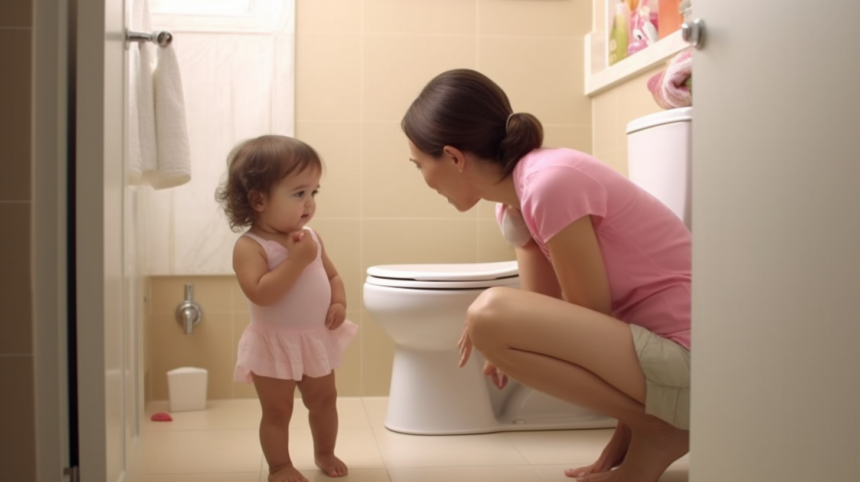Welcome to the comprehensive guide to determine your child’s potty training readiness! Potty training is a major milestone in a child’s life and can be an exciting yet challenging experience for parents. Every child is different, and there is no one-size-fits-all approach to potty training. In this tutorial, we will cover everything you need to know about determining your child’s readiness for potty training, including signs of readiness, tips for getting started, common challenges, and rewards and incentives. By the end of this guide, you will have all the information you need to make your child’s potty training journey a success.
Signs of Readiness
The first step in determining your child’s readiness for potty training is recognizing the signs that they are ready. Here are some common signs that your child may be ready to start toilet training:
- Interest in the toilet: If your child starts showing curiosity about the toilet or follows you or siblings into the bathroom, it could be a sign that they are ready to start potty training.
- Awareness of bodily functions: If your child starts telling you when they have soiled their diaper or feels uncomfortable in a wet diaper, it could be a sign that they are ready for toilet training.
- Ability to follow simple instructions: If your child can follow simple instructions like “sit down” or “stand up,” it could be an indication that they are ready for potty training.
- Daytime dryness: If your child can stay dry for at least two hours during the day, it could be an indication that they are ready for potty training.
- Desire for independence: If your child starts showing an interest in doing things for themselves, it could be a sign that they are ready for potty training.
It’s important to note that not all children will exhibit these signs at the same time. Every child is different, and some may take longer to show readiness signs than others. It’s essential to be patient and wait until your child is ready before starting potty training.
Getting Started
Once you have determined that your child is ready for potty training, it’s time to get started. Here are some tips to help make the process as smooth as possible:
- Choose the right equipment: You will need a child-sized toilet seat or a potty chair, step stool, and plenty of underwear or training pants. Let your child pick out their favorite underwear or training pants to help them feel more involved in the process.
- Pick the right time: Choose a time when you and your child are not too busy or stressed. Avoid starting potty training during major life changes like moving house or welcoming a new sibling.
- Talk about it: Explain to your child what potty training is and why it’s important. Use simple language that they can understand, and encourage them to ask questions if they have any.
- Show them how it’s done: Let your child watch you or an older sibling use the toilet so they can see how it’s done.
- Schedule regular potty breaks: Take your child to the toilet every hour or so, especially after meals or drinks. Encourage them to sit on the toilet for a few minutes even if they don’t need to go.
- Be patient and positive: Potty training can be a frustrating experience for both you and your child. Be patient, positive, and encouraging throughout the process. Celebrate small successes and don’t punish your child for accidents.
Common Challenges
Potty training is not without its challenges, and it’s essential to be prepared for them. Here are some common challenges you may encounter during potty training:
- Accidents: Accidents are a normal part of the potty training process. Be patient and clean up accidents calmly without making a big deal out of them.
- Nighttime bedwetting: Nighttime dryness usually takes longer to achieve than daytime dryness. Use pull-ups or training pants at night until your child is consistently waking up dry.
- Resistance: Some children may resist using the toilet or wearing underwear. Be patient and encourage them gently, but don’t force them to use the toilet if they’re not ready.
- Lack of progress: If your child is not making progress with potty training after several weeks, it may be time to take a break and try again later.
Rewards and Incentives
Rewards and incentives can be a great way to motivate your child during potty training. Here are some ideas for rewards and incentives:
- Praise: Positive reinforcement like praise, high-fives, or hugs can go a long way in motivating your child.
- Treats: Small treats like stickers, toys, or a favorite snack can be a great incentive for your child.
- Charts: Use a potty training chart to track your child’s progress and reward them with a prize when they reach certain milestones.
- Potty party: Celebrate your child’s success with a potty party, complete with balloons, cake, and other treats.
Conclusion
Potty training can be a challenging but rewarding experience for both you and your child. By recognizing the signs of readiness, choosing the right equipment, being patient and positive, and using rewards and incentives, you can help make the process as smooth as possible. Remember that every child is different, and there is no one-size-fits-all approach to potty training. Be patient, stay positive, and celebrate small successes along the way.

